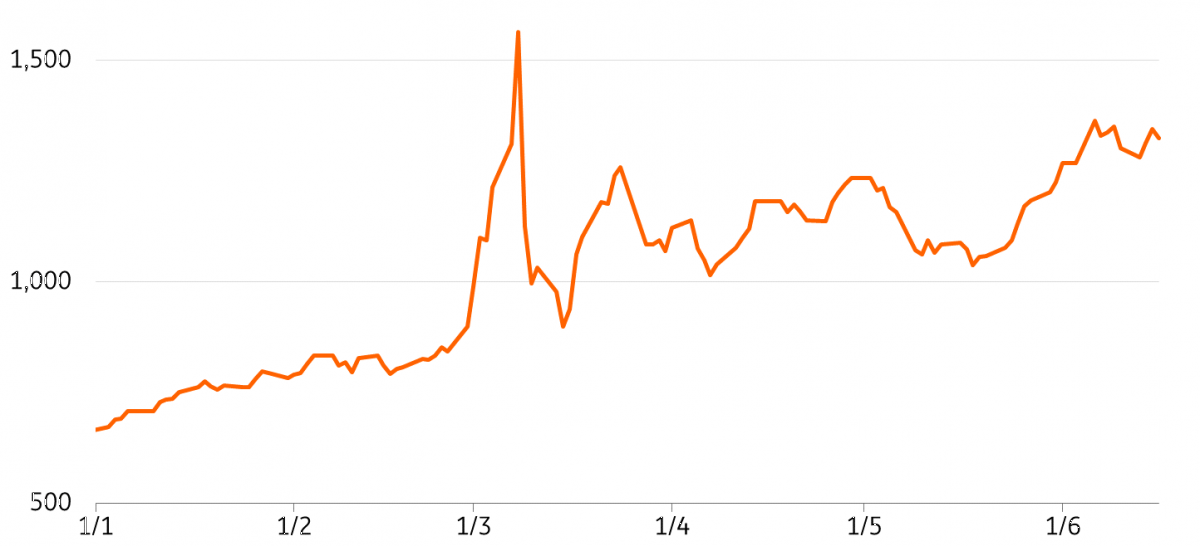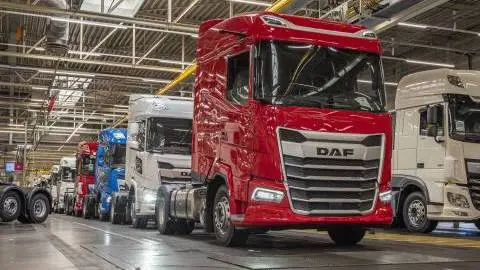Road haulage sector loses speed as costs go through the roof
It’s all about production in the transport equipment industry, but the road transport sector drives the truck and trailer markets in the end. The sector quickly gained speed over the pandemic, but costs have soared and headwinds are mounting
European road transport recovers, but slows on weakening consumer growth
Although supply currently leads the European truck and trailer markets, road transport activity is eventually driving demand. Following a swift turnaround driven by extra goods demand during the pandemic, the European road haulage sector exceeded its previous level in 2021. On the back of the full reopening of economies, consumers have shifted more spending towards services again, and soaring e-commerce figures showed a soft correction in 1Q22. Consumers have also started to feel the impact of inflation. Solid transport demand growth still comes from clients in construction and manufacturing, although this is expected to slow down in the run-up to 2023.
German motorway mileage (MAUT) – a good proxy for European road freight traffic – showed an increase of some 1.5% over the first five months of 2022. All-in-all, European road transport is set to grow only slightly this year.
European road freight traffic volume growth slows in 2022
Evolution of road freight traffic kilometers on German motorways y.o.y

Driver shortage: a structural challenge impacting investment activity
In current tight labour markets, driver planning increasingly dominates the road haulage business, especially when it comes to expansion and related investments in trucks. Driver shortages have reached peak levels in several European countries. Especially in the UK – which faced an exodus of Eastern European truckers following Brexit, adding to supply chain delays. Consequently the ability to hire truckers is very relevant for investments, and this tends to be a more structural phenomenon. The main reasons behind the shortage are:
- An ageing population and the retirement of truckers (and younger people seeking a better work-life balance) – 32% of the European driver population is over 55 (average age 47) compared to 21% for the total workforce.
- A weak image of the profession among youngsters and a lack of skilled drivers.
- Regulatory inefficiencies like Brexit and supply chain frictions pushing up waiting hours and consuming labour.
- Higher absence rates due to Covid.
- The absence of a large pool of Ukrainian drivers.
There’s no quick fix for driver shortages, which means this will remain a challenge for the sector for longer. The fact that only a fraction of the population consists of female drivers – and the job is not attractive to them - limits potential as well. In order to attract drivers, companies needed to raise their offerings. Consequently, trucker wages in the UK increased by double digits in 2021.
Perfect storm of rising costs leads to postponed investments
The fragmented European road haulage sector has faced a complex mix of rising costs this year. Fuel prices have soared and represent the largest chunk of operational costs. Labour costs are also on the rise and new trucks and trailers turned significantly more expensive. This combination of multiple rising costs is a financial challenge.
The current tight capacity helps transport companies raise their rates, which alleviates their positions somewhat, but still, margins are under pressure. Long lead times force companies to plan investments further ahead, but soaring prices of new equipment make them postpone investments as well. Companies operating a relatively young fleet have a beneficial position in that sense.
Diesel market prices remain elevated
Daily diesel spot market prices (Metric Tonne) in EUR in 2022

Record high diesel prices also build a stronger case for fuel saving replacements
Diesel prices at gas stations jumped more than 40% in mid-2022, varying in different European countries based on government measures to lower excise duties. Europe traditionally has a diesel supply gap and highly relied on Russia for supplies prior to the sanctions. As refinery capacity is limited and new investments across the world have been low for years, diesel prices are expected to stay elevated for longer. Although an estimated 80% of companies and even a larger share of the fleet can pass on (most of) the higher fuel bill, a fully matched compensation is often a challenge. In that regard, high fuel prices are a clear incentive to increase fuel efficiency and could also strengthen the case for replacements of material as new generation trucks are significantly more efficient. And saving on the amount of fuel consumed is beneficial anyway.
This publication has been prepared by ING solely for information purposes irrespective of a particular user's means, financial situation or investment objectives. The information does not constitute investment recommendation, and nor is it investment, legal or tax advice or an offer or solicitation to purchase or sell any financial instrument. Read more
Download
Download article
1 July 2022
Extraordinary times for the European truck and trailer market This bundle contains 3 Articles